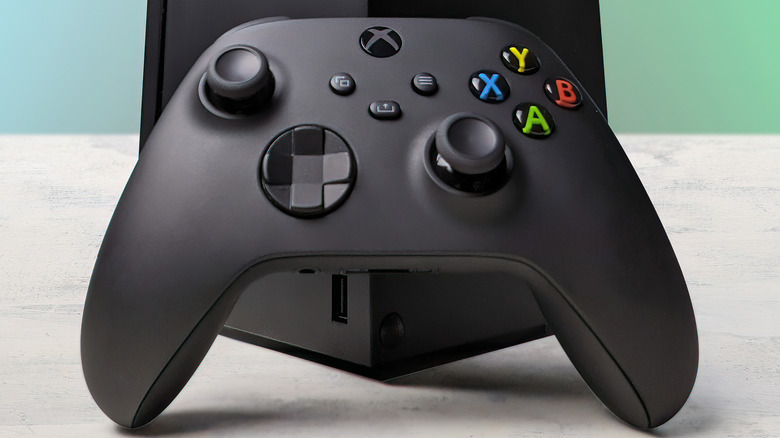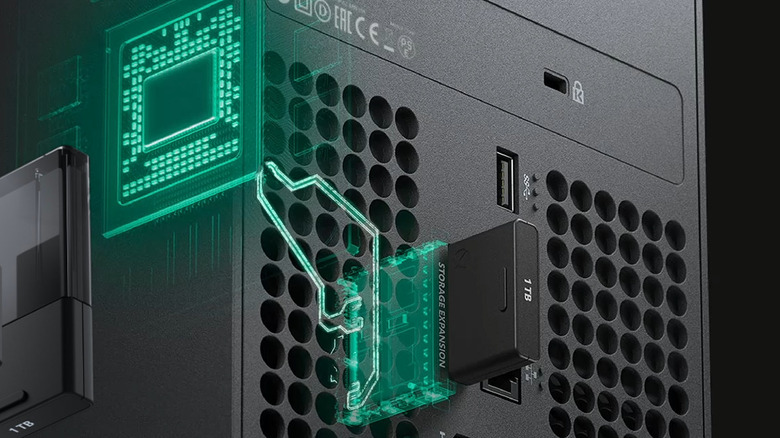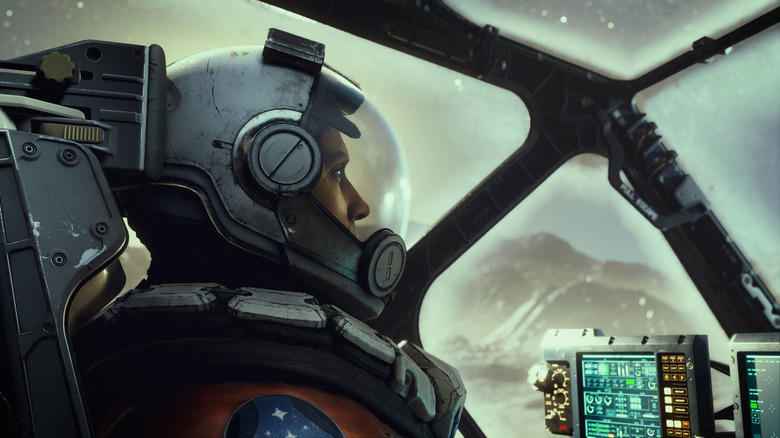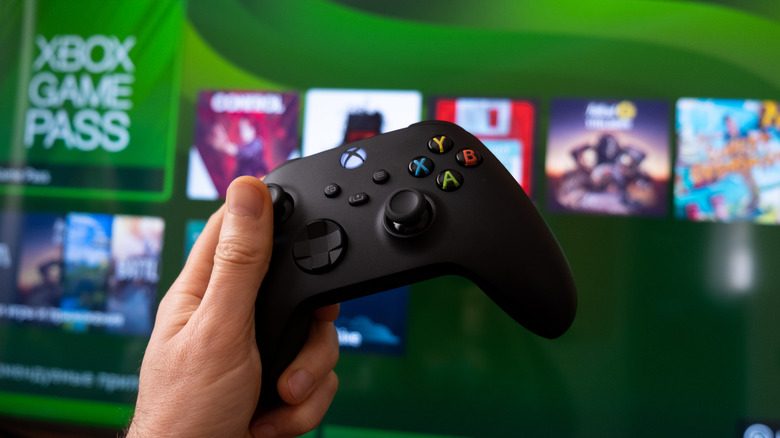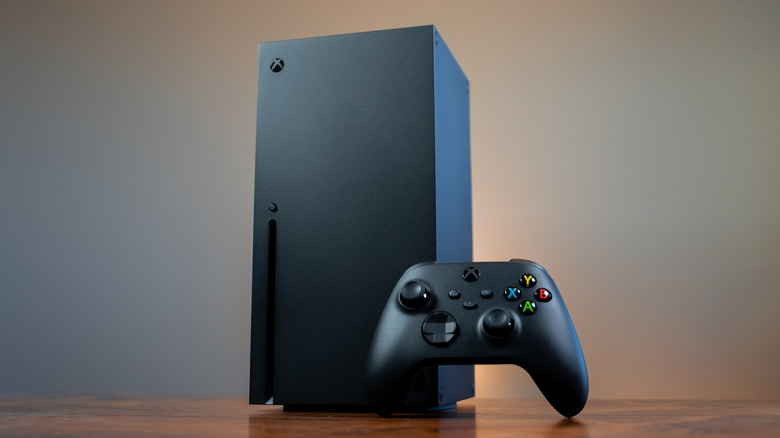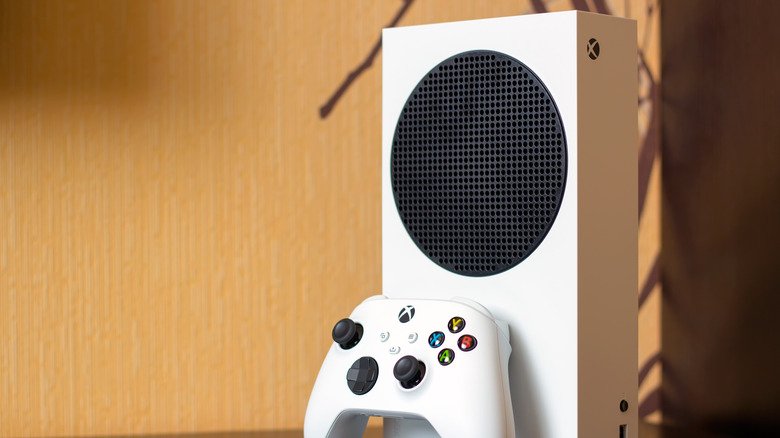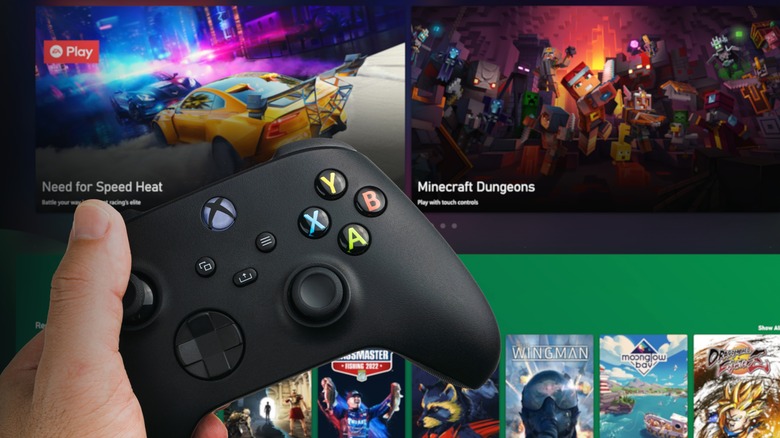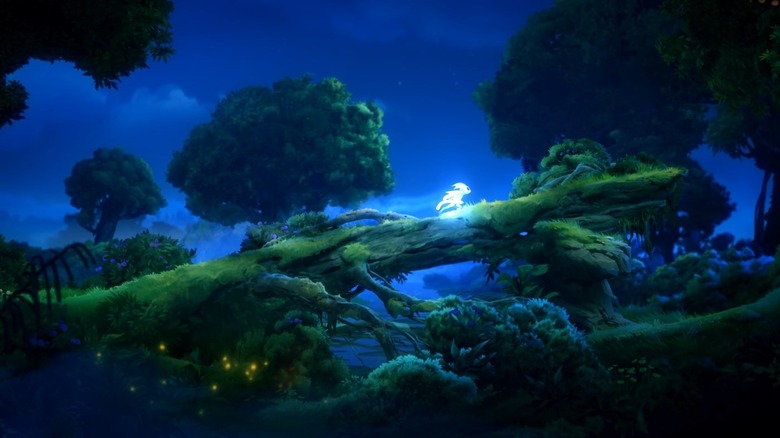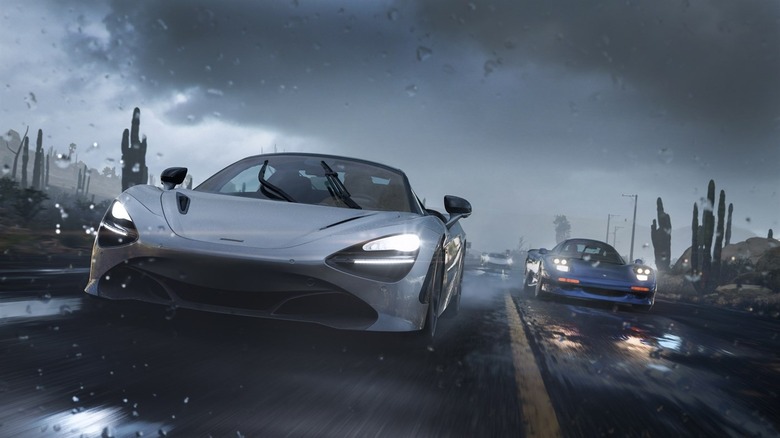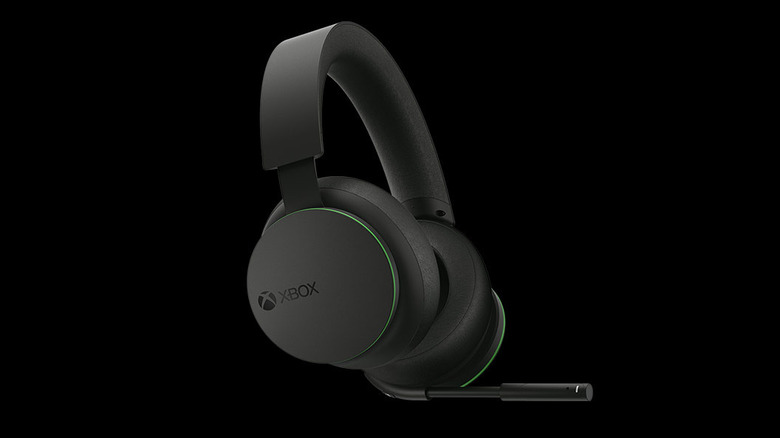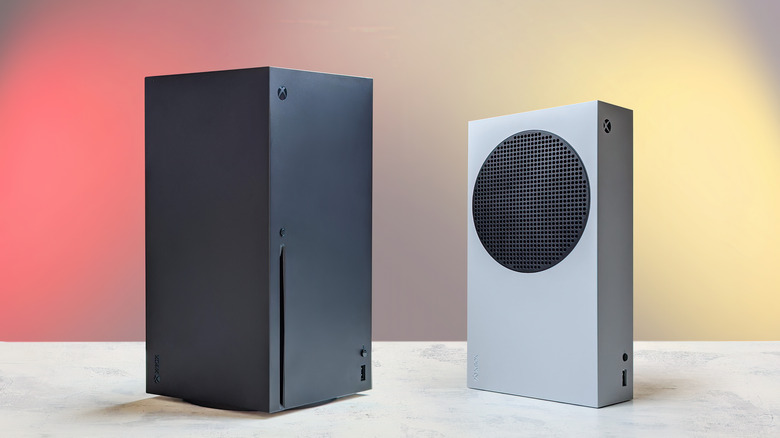10 Times Xbox Destroyed The PS5
A decades-long arms race followed Microsoft's entry into the video game console market in 2001. Its release of the Xbox signaled direct competition with Sony's PlayStation 2 and marked the beginning of a new "console war."
Each generation of consoles pushes each other's capabilities to the forefront of gaming technology. Furthermore, beyond performance differences, Microsoft and Sony compete for exclusivity rights by purchasing some of the gaming industry's most renowned studios. This push-and-pull dynamic between powerful rivals benefits the gaming industry.
And while the rivalry between Microsoft and Sony is not as hostile as some might think, the nature of such high-stakes competition requires getting the upper hand in as many ways as possible. Correspondingly, the 4th iteration of Microsoft and Sony's console wars — between the Xbox Series X|S and PS5 — only ramped up the contest. The PS5 has certainly not pulled any punches in trying to get ahead of the competition. So what has the Xbox Series X|S done to earn its stripes? What follows are some of the Xbox's most substantial victories over the PS5.
Stronger hardware
Front and center, the main question facing any video game console is: What can it do? The Xbox Series X|S, for that matter, can do more than any of its peers. In terms of storage, upscaling compatibility, and raw processing power, the Xbox Series X stands head and shoulders above the PS5.
To compare the numbers, the Xbox Series X CPU tops out at 3.8 GHz compared to the PS5's 3.5 GHz. The Xbox Series X GPU provides 12 teraflops of power compared to PS5's 10.28. Also, the Xbox Series X has 1 TB of SSD storage compared to the PS5's 825 GB. In non-technical terminology, the Xbox Series X is simply faster, more powerful, and has more storage. Microsoft was apt to boast in its marketing for the console about its industry-leading goods under the hood.
Another edge the Xbox Series X|S offered over the PS5 was its support of native 1440p resolution from the very release of the console. It took until September 2022 for the PS5 to stop using resolution upscaling to satisfy the needs of all monitors. Overall, the Xbox Series X holds a definite advantage over the PS5 in this generation's battle for hardware superiority.
Securing Bethesda
One of the most powerful incentives that Microsoft and Sony strive for is exclusivity rights to desirable games. It turns out many gamers like playing some of the industry's best games, such as the "Halo" franchise. That is why Microsoft and Sony lock them behind their console's paywalls.
Alongside the release of the Xbox Series X|S, Microsoft went on a gaming studio buying spree. The likes of Mojang and Obsidian Entertainment soon belonged to Microsoft, and its attempted purchase of Activision Blizzard caused a stir in fans worried about the future of the "Call of Duty" franchise becoming an Xbox-only console exclusive. Further industry-wide concerns about Microsoft's growing control of the gaming studios prompted regulatory investigations which threaten to shut down its attempted purchase of Activision Blizzard. For its sake, Microsoft offered a seat at the deal-making table for sharing the likes of the "Call of Duty" franchise with Sony in December 2022. Beyond its rivalry with PlayStation, Microsoft also made a deal with Nintendo to bring "Call of Duty" on the Switch.
The most promising game studio purchase for console exclusives on the Xbox Series X|S is Bethesda. The $7.5 billion purchase gives Microsoft rights to beloved franchises such as "The Elder Scrolls," "Fallout," "Wolfenstein," and "Doom." Perhaps most notably, Bethesda's next blockbuster RPG, "Starfield," will exclusively release on the Xbox Series X|S in 2023. As long as the competition for console exclusives stays heated, so too will the market for purchasing game studios and publishers.
Better Game Pass service
Streaming services for entertainment media are widespread. For the video game industry, Microsoft's Xbox Game Pass packs the most punch. Its Ultimate Edition, which costs $15 monthly, unlocks streaming for some of the Xbox's best games. Additionally, the Ultimate Xbox Game Pass provides an Xbox Live Gold membership, an EA Play pass to grant access to EA's game library, and it even unlocks exclusive perks from different studios, such as Riot Games.
The Xbox Game Pass excels in its game library's quantity and quality. Xbox Game Studios games publish on the Xbox Game Pass for streaming on the same day as their market release. Consequently, all upcoming exclusives that Microsoft secured, like "Starfield," will be available to stream on the Xbox Game Pass the same day as its market release.
By comparison, it took until June 2022 for the PS Plus subscription service to offer a substantial game streaming library. However, the PS Plus's revamped offering crucially lacks the cross-platform capabilities of the Xbox ecosystem. Unfortunately, Sony lacks commitment to same-day releases of premium, blockbuster games for PS Plus subscribers. Value and overall pricing also favors the Xbox Game Pass. The lowest Xbox Game Pass tier only costs $10 a month for full access to its game catalog. Conversely, PS Plus requires its middle-tier subscription at $15 per month to access its catalog. With value oozing from every angle, the Xbox Game Pass takes the cake.
An appropriate design
Sometimes all it takes to win a competition is to let the other competitors defeat themselves. And that is what Microsoft accomplished in its duel with Sony to make the best-looking next-gen console.
Microsoft took the safe route, designing a minimalist black rectangle. The PS5, on the other hand, took the experimental, exotic route. As it turns out, the risk did not pay off for Sony. Retrospective forums comparing the design of the two consoles revealed some dissatisfaction with the PS5. Opposed to the Xbox Series X, which fits into the background of entertainment systems, the PS5 stands out as a focal point. Its white color and eccentric angles make it seem like an oversized router evocative of a spaceship.
The PS5's over-the-top aesthetics may also cause its hardware some problems. The PS5 is supposed to stand horizontally or vertically without any loss of function. It turns out, however, a potential design flaw could cause the PS5's multiple positions to degrade the console's performance. From a console design point-of-view, the PS5 struck out swinging, while the Xbox Series X won by playing it safe.
More affordable 2nd-tier console
To reach as many households as possible, Sony and Microsoft released more affordable versions of their respective consoles. The PS5 digital edition solely removed the console's Blu-Ray Optical Disk Drive while shaving $100 off its original $500 price point. The Xbox Series S changed more, opting for less powerful hardware overall in service of shaving $200 off the Xbox Series X's $500 price point.
Most differences between the Xbox Series X and S lie in their resolution capabilities. The Xbox Series X runs best at 4k resolution on 4k TV screens and monitors. The Xbox Series S, by comparison, can run 1440p resolution on 1440p screens. Resolution upscaling is still available for the Xbox Series S for games capable of running at 4k. Importantly, in 2023, 4k screens are not yet widespread. Therefore, the Xbox Series S's resolution differences are not as important.
The other next-gen bells and whistles, like DirectX Raytracing, Variable Rate Shading, and Dolby Atmos Spatial Sound of the Xbox Series X made it onto the Series S. All of this culminates in a console that provides a next-generation experience to the widest possible market at the lowest price when compared to its competitors. All in all, the Xbox Series S accomplishes being a 2nd-tier console better than the PS5 Digital Edition.
Multiple Game Windows
The upgraded processing capabilities of the PS5 and Xbox Series X|S enabled these next-gen consoles to add new ease-of-life features for their users. Particularly, the fact that both systems run on SSD memory systems allows for lightning-fast loading times compared to the hard drives of previous generations.
As such, the Quick Resume feature for the Xbox Series X|S and the PS5's Switcher developed to capitalize on the extra power. Both interfaces allow players to jump between game windows, only the Xbox Series X| S' is more powerful. The Quick Resume feature keeps track of exact save states when games are closed. With three save states available, the Xbox Series X|S allows players to jump between (or Quick Resume) these saved states at the snap of a finger.
The PS5's Switcher, on the other hand, does not keep track of closed saved states like the Xbox Series X|S. Instead, its multiple-game-widows function purely relies on the console's processing power to re-open all save states from scratch every time. Finally, the PS5's Switcher only allows opening one game and one other application compared to the Xbox Series X|S's capability of three. As a result, the Xbox Series X|S' Quick Resume Feature outpaces and outperforms the PS5's user experience.
Optimized Smart Deliveries
With massive game catalogs from previous console generations, Microsoft and Sony need to find ways to make their older games appealing to play on next-generation consoles. Microsoft devised the Smart Delivery system. It allows players to download an Xbox Series X|S optimized version of an owned Xbox One game for free. Upon the launch of the Xbox Series X, more than 20 games were available for Smart Delivery. As time has passed, in 2023, more than 40 games have confirmed Smart Delivery releases. The list of hits of Smart Delivery games includes the likes of "Cyberpunk 2077," "Gears 5," and "Ori and the Will of the Wisps."
Sony's game optimization service, similar to the Smart Delivery system, provides next-generation updates for older games. The main difference, however, is that the PS5's upgrading system is much harder to navigate. Upgrades between PS4 and PS5 games, unfortunately, rely on physical vs digital ownership. To upgrade physical copies of PS4 games, for instance, players need to use the physical disk to unlock the upgraded PS5 download. If that person has a PS5 Digital Edition without a disk drive, then they are completely out of luck in getting an upgraded version of their PS4 game. Compared to the Xbox Series X|S's seamless Smart Delivery of the best version of every available game, regardless of physical or digital copies, the PS5's optimization system losses out.
Variable Refresh Rate that's one step ahead
Variable Refresh Rate refers to an advanced feature in gaming consoles, TV screens, and monitors that match the FPS outputs of a game to the display's refresh rate. Video games run at different FPS depending on performance variables and a mismatch between a game's FPS and a display's refresh rate can cause visual bugs. Most notably, screen tearing is a result of mismatched game FPS and screen refresh rate.
Variable Refresh Rate technology has been available on PC for years with AMD offering AMD FreeSync and Nvidia offering G-Sync. The Xbox Series X|S launched with its own VRR capabilities as well as AMD FreeSync compatibility. The PS5, conversely, did not launch with VRR capabilities or AMD FreeSync. It took until 2022 for the PS5 to offer only HDMI 2.1 VRR support. While most contemporary TVs support HDMI 2.1 ports, many gaming displays and monitors only support HDMI 2.0 ports while relying on AMD FreeSync or Nvidia G-Sync for VRR. A final reason that Xbox Series X|S's VRR is better than the PS5's is that it is backward compatible with Xbox One games and the PS5's VRR is not compatible with PS4 games. Taking all this into consideration, the Xbox Series X|S had and still maintains a serious lead in this advanced visual technology.
Faster Discord implementation
Voice chat is an edge Microsoft has held over Sony for a long time. Microsoft's Xbox Live membership, which launched in 2002, supported voice chat. The original Xbox Live Membership Starter Kit from 2002 even came with a headset and microphone.
Times have not changed that much, it turns out, because Microsoft once again beat Sony to the punch when it comes to voice chat. Discord is a voice chat and messaging service with customizable, programmable servers. It is a go-to product for gamers, but it was only available for PC gamers. In July 2022, Microsoft introduced Discord to the Xbox Series X|S and the Xbox One. Although the Discord app on the Xbox has fewer features than its PC origin, it still was a victory for Xbox Series X|S owners. Sony, lagging, only achieved Discord implementation for its customers in March of 2023. Moreover, Discord is not even available for PS4 users, so once again Microsoft struck a better deal for its users.
Better Backward Compatibility
Each new generation of consoles must answer a customer-friendly question: is it backward compatible? After consumers spend years of time and large amounts of money on their game collections, it only makes sense for them to want those collections to remain viable in the new generation. As such, the more backward compatible a console is, the more it is customer friendly.
Microsoft dominates Sony in this regard. People who own an Xbox Series X|S can also play Xbox One games, Xbox 360 games, and even some original Xbox games. That's right. The Xbox Series X|S can reach as far back as 4 generations! Classics from the original Xbox, like "Star Wars Battlefront II," are playable on the Xbox Series X|S.
By comparison, the PS5 is only backward compatible with PS4 games. Instead of 4 generations worth of console classics to keep in one's collection, the PS5 only supports 2 console generations. Further, the PS5's catalog of PS4-boosted games is far smaller than the Xbox Series X|S's catalog of FPS-boosted games. As a result, Sony proved less dedication to customer-friendly backward compatibility than Microsoft.

